I NEED A FAVOR FROM ALL THE SENIORS IN FERNDALE. It’s not big, but, it is important.
Why do I need this favor? I’m hearing that seniors feel a little left out with respect to the cultural and educational aspects of Ferndale, and that you want to learn things, be entertained, and socialize with your peers.
You’ve said that you don’t want to do the bars or in general hang out with young, noisy people consuming adult drinks. I get it, I don’t either anymore. We need to get more information from you, as to what you want, what time of the day, and where.
I understand that you want classes geared to seniors. But what subject matter? Do you want a series? Or maybe just one-time lectures? Do you want to learn something and, if so, what? Nutrition, scam-prevention, knitting, drawing, health, art appreciation, history of Detroit?
The reason for this pathway of thinking is that our senior group is not growing. Together with the apparent needs of seniors not in our group, this makes me wonder if we could do more to answer the needs of those who aren’t members.
After all, we are all in the same boat. We all have already lived full lives. Now is the time to have a little fun.
Learn a new skill, learn how to know what a painting is telling us, find out about the streets of Detroit from the past. The possibilities are endless.
Some of these things you can get now at the Kulick Center, and by attending senior meetings. We have a knitting group with a capable teacher. At our meetings, we routinely have speakers from the DIA, Detroit Historical, scam experts, nutrition experts. We also have fun stuff like card parties, tea parties, pot luck lunches. We travel to cider mills, unique restaurants, museums, shopping trips, even the Detroit River walk!
All that said, a person has to know about these things to take advantage of them. I was astounded to talk to a man yesterday who had no idea that the senior group even existed. This leads to the question of where do you folks get your information on what is happening in Ferndale? We publicize on Facebook, as well as with flyers at the Center. Clearly, this isn’t enough if people are unaware of it.
Our Senior Group meets on the second and fourth Wednesday of the month at 11:00 A.M. at the Kulick Center. Ask at the front desk for a copy of the newsletter, and you can read about our upcoming events.
SO, HERE IS THE FAVOR: Please call me. My number is at the end of this column. Tell me how you get information on happenings. Tell me what classes or lectures you would at-tend. Tell me if it’s day or night classes or lectures. We can’t help if we don’t know.
Or just attend a meeting to see what we are all about. We promise we won’t grab you and sell you into slavery. At least not at the first meeting.
Call me.
Jeannie Davis, 248 541 5888

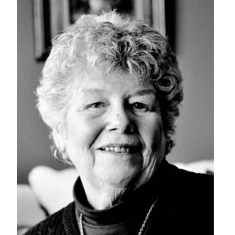

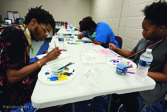 essential to success in the art world, which is why Vickie Elmer and her three co-founders created the Mint Artists Guild, a 501c3 nonprofit group dedicated to helping metro Detroit young artists succeed.
essential to success in the art world, which is why Vickie Elmer and her three co-founders created the Mint Artists Guild, a 501c3 nonprofit group dedicated to helping metro Detroit young artists succeed. Initiative, where the youth choose a nonprofit, create a concept and image based on its mission and donate the art to the nonprofit. There will be an exhibit displaying this year’s works at the Boll Family YMCA through the end of October.
Initiative, where the youth choose a nonprofit, create a concept and image based on its mission and donate the art to the nonprofit. There will be an exhibit displaying this year’s works at the Boll Family YMCA through the end of October.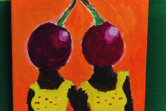 variety of well-respected national and local artists, as well as a few pieces from Mint artists and alumni. Proceeds will help provide supplies and funding for Mint Artists Guild.
variety of well-respected national and local artists, as well as a few pieces from Mint artists and alumni. Proceeds will help provide supplies and funding for Mint Artists Guild.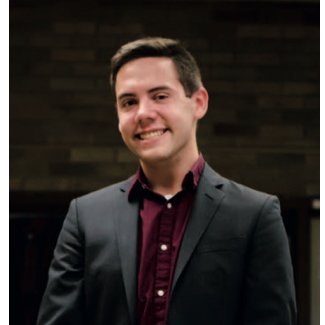
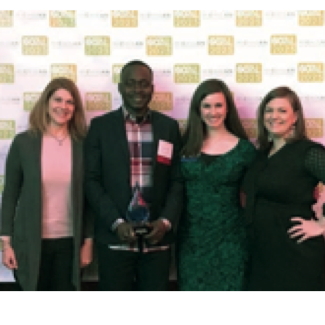
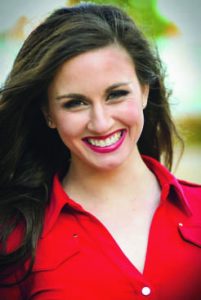 “With this in mind, the Hazel Park Promise Zone Scholarship Program was created to eliminate finances as a barrier to higher education for Hazel Park students, to increase educational attainment in the community, and to incentivize families to move into or continue residing in the school district,” said Hazel Park’s Promise Zone Executive Director Kayla Roney Smith.
“With this in mind, the Hazel Park Promise Zone Scholarship Program was created to eliminate finances as a barrier to higher education for Hazel Park students, to increase educational attainment in the community, and to incentivize families to move into or continue residing in the school district,” said Hazel Park’s Promise Zone Executive Director Kayla Roney Smith.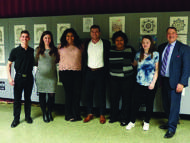 Student Aid (FAFSA), and any additional financial aid application steps required by the colleges they plan to attend. “While there is not a strict application deadline, we ask that they complete these steps prior to their last day of school in order to ensure quick processing,” she said.
Student Aid (FAFSA), and any additional financial aid application steps required by the colleges they plan to attend. “While there is not a strict application deadline, we ask that they complete these steps prior to their last day of school in order to ensure quick processing,” she said.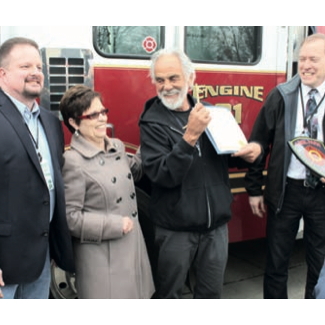
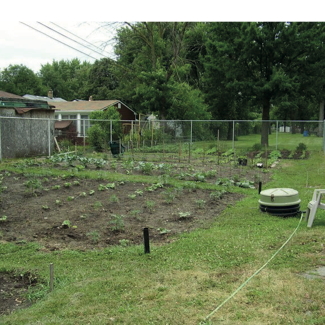
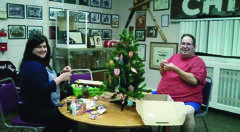 be. We are part of the community. We are your neighbors and friends, and all of us are doing what we can, with what we have, where we are,” their mission statement (listed on their Face-book page) says.
be. We are part of the community. We are your neighbors and friends, and all of us are doing what we can, with what we have, where we are,” their mission statement (listed on their Face-book page) says.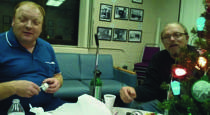 the Hazel Park Recreation Center. One mission of the Flower Power committee is bringing the hazelnut bush – Hazel Park’s namesake – back to the city. They’ve plant-ed some in Kennedy Park and celebrate St. Filbert’s Day on August 20th. The filbert is a variation of the hazelnut, and the celebration is derived from the Roman Catholic holiday celebrated in France and England. Typically, the City puts on a memorial race on the holiday.
the Hazel Park Recreation Center. One mission of the Flower Power committee is bringing the hazelnut bush – Hazel Park’s namesake – back to the city. They’ve plant-ed some in Kennedy Park and celebrate St. Filbert’s Day on August 20th. The filbert is a variation of the hazelnut, and the celebration is derived from the Roman Catholic holiday celebrated in France and England. Typically, the City puts on a memorial race on the holiday.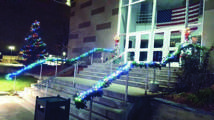 mented by donations and fundraising. Their largest fundraising event is an annual dinner held in May with raffles and prizes. Typically a spaghetti dinner, the past two years the organization has taken advantage of May 5th falling on a weekend and held a Cinco de Mayo-themed event. The 2018 event was co-catered by Country Boy restaurant and featured a taco bar with sides and desserts.
mented by donations and fundraising. Their largest fundraising event is an annual dinner held in May with raffles and prizes. Typically a spaghetti dinner, the past two years the organization has taken advantage of May 5th falling on a weekend and held a Cinco de Mayo-themed event. The 2018 event was co-catered by Country Boy restaurant and featured a taco bar with sides and desserts.
 mileage and stuff,” Foster says. “It’s a shame that in Michigan it’s not a necessity to have a motorcycle because of our weather – real short season – and the state considers it a recreational vehicle.” Foster says.
mileage and stuff,” Foster says. “It’s a shame that in Michigan it’s not a necessity to have a motorcycle because of our weather – real short season – and the state considers it a recreational vehicle.” Foster says.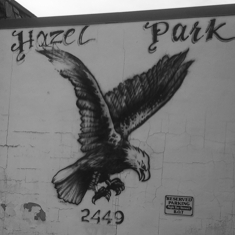
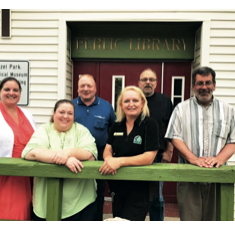
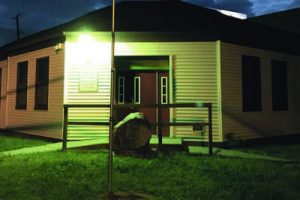 created, from its early days as a farming community through the years of growth and development. Businesses, schools, and people from Hazel Park are all well-represented. We have new acquisitions from the recently-closed Hazel Park Raceway, and we are planning more themed exhibits soon as time permits. We have scanned copies of yearbooks, from 1935 to almost the present day, available to look at on our computer, as well as some hard copies of yearbooks donated by patrons.
created, from its early days as a farming community through the years of growth and development. Businesses, schools, and people from Hazel Park are all well-represented. We have new acquisitions from the recently-closed Hazel Park Raceway, and we are planning more themed exhibits soon as time permits. We have scanned copies of yearbooks, from 1935 to almost the present day, available to look at on our computer, as well as some hard copies of yearbooks donated by patrons.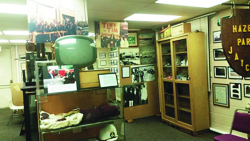 Sunday of the month, from 12:00 P.M. to 4:00 P.M., and on the third Thursday of the month from 6:00 P.M to 8:00 P.M. We also hold our Historical Commission meetings on that same third Thursday. We are also open by appointment as well.
Sunday of the month, from 12:00 P.M. to 4:00 P.M., and on the third Thursday of the month from 6:00 P.M to 8:00 P.M. We also hold our Historical Commission meetings on that same third Thursday. We are also open by appointment as well.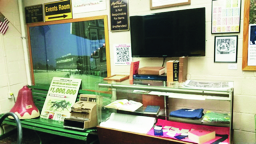 floors. We’ve received some donations for bathroom fixtures recently and would welcome help with facility development from the community.
floors. We’ve received some donations for bathroom fixtures recently and would welcome help with facility development from the community.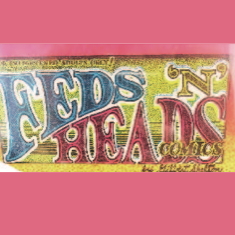
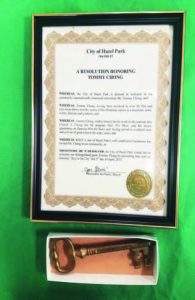 collectibles many years ago. He started collecting tickets, trinkets, memorabilia, old bongs, posters, roach clips and a myriad of other paraphernalia.
collectibles many years ago. He started collecting tickets, trinkets, memorabilia, old bongs, posters, roach clips and a myriad of other paraphernalia.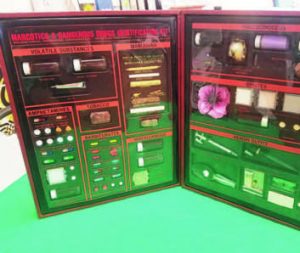 medical and recreational use through to present day.
medical and recreational use through to present day.